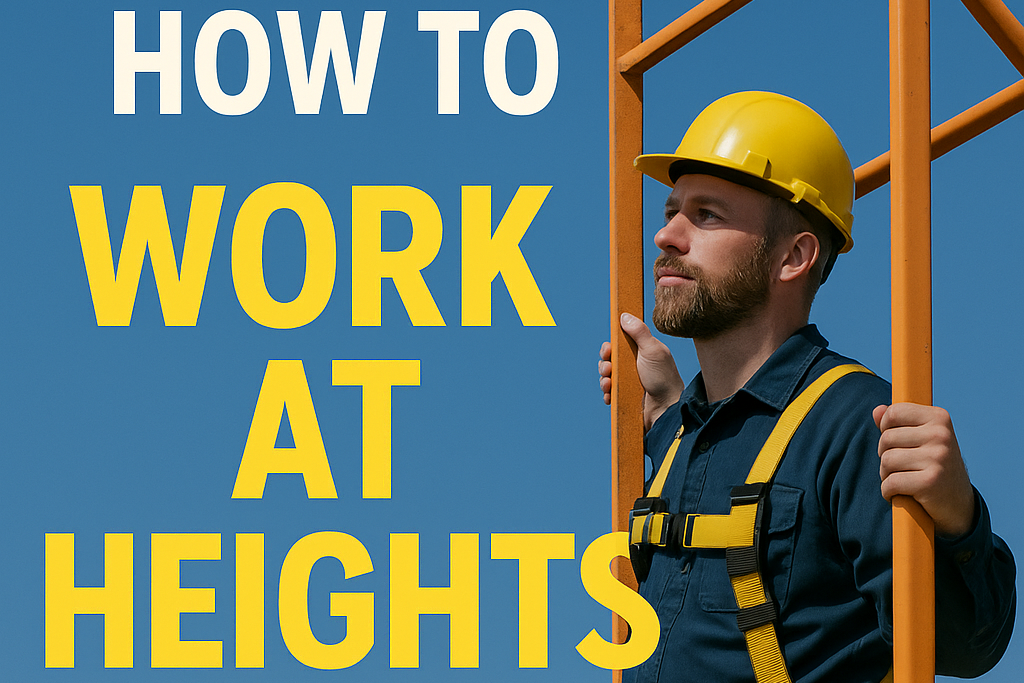Prevent Falls from Heights in Construction is not just a regulatory obligation—it’s a matter of life and death. Falls remain one of the leading causes of injuries and fatalities in the construction industry.
Thankfully, with proactive safety practices, proper equipment, and a strong safety culture, these tragic incidents can be prevented.

This article outlines seven powerful strategies every site manager, safety officer, and worker should implement to prevent falls from heights and promote a secure working environment.
- 1. Conduct a Thorough Risk Assessment
- 2. Use the Right Fall Protection Systems
- 3. Train Workers Thoroughly and Regularly
- 4. Inspect Equipment Before Every Use
- 5. Implement and Enforce a Fall Protection Plan
- 6. Use Proper Access Equipment and Techniques
- 7. Create a Safety-First Work Culture
- Final Thoughts: Prevent Falls from Heights in Construction Is Everyone’s Job
1. Conduct a Thorough Risk Assessment
Before work at height begins, a comprehensive risk assessment is crucial. This process helps identify potential hazards such as unprotected edges, unstable working surfaces, or weather-related risks like wind or rain.
Every fall risk should be documented and evaluated using a hierarchy of controls, prioritizing elimination (e.g., performing work at ground level) over less effective measures like PPE.
💡 Tip: Use a site-specific checklist and involve workers in the assessment to uncover hidden risks. Tools like the CSA Group’s fall protection standards offer detailed guidance.
2. Use the Right Fall Protection Systems
Selecting the correct fall protection system is essential. Options include:
- Guardrails: Ideal for flat roofs and scaffolds.
- Personal Fall Arrest Systems (PFAS): Include full-body harnesses, lanyards, and anchorage points.
- Safety Nets: Useful in large-scale projects where other systems are impractical.
Ensure equipment meets national standards like WorkSafeBC or OSHA. Poor-quality gear or improper use can lead to fatal consequences.
3. Train Workers Thoroughly and Regularly
Even the best equipment is useless if workers don’t know how to use it. Training should cover:
- Hazard recognition and mitigation
- Proper donning and inspection of harnesses
- Emergency rescue procedures
- Understanding fall clearance and swing fall risks
Ongoing training reinforces correct habits. Platforms like OHSE.ca and the Canadian Centre for Occupational Health and Safety (CCOHS) provide excellent learning resources.

4. Inspect Equipment Before Every Use
One overlooked factor in many fall incidents is faulty equipment. Workers should be trained to inspect:
- Frayed harness straps
- Rusty or broken connectors
- Damaged anchorage points
Set up a logbook system for recording inspections. If any part of the fall arrest system is questionable—replace it immediately.
5. Implement and Enforce a Fall Protection Plan
A Fall Protection Plan (FPP) is a detailed document outlining the specific measures your team will take to prevent falls. It includes:
- Identified fall hazards
- Type of fall protection to be used
- Rescue procedures
- Names of trained personnel
This plan should be reviewed daily before work begins and updated as site conditions change.
📌 Internal link idea: Learn how to develop effective safety plans in our Construction Site Safety Planning Guide.
6. Use Proper Access Equipment and Techniques
Improvised ladders or makeshift scaffolding are recipes for disaster. Always ensure:
- Ladders are the correct height and secured
- Scaffolds are professionally erected with guardrails
- Aerial lifts are used with harnesses and appropriate training
Clear pathways, stable footing, and strong materials go a long way in fall prevention.

7. Create a Safety-First Work Culture
Even the best strategies fail if workers don’t believe in them. Foster a culture where:
- Workers look out for each other
- Supervisors lead by example
- Safety violations are addressed promptly
- Reporting near misses is encouraged, not punished
Use safety meetings, posters, and regular toolbox talks to keep fall protection top of mind. If your team believes safety is a shared responsibility, compliance and vigilance will rise.
Final Thoughts: Prevent Falls from Heights in Construction Is Everyone’s Job
To prevent falls from heights in construction, you must combine engineering controls, PPE, training, and culture.
No single method is foolproof, but together they create a robust safety net that saves lives. Make fall protection part of your daily routine—not just a checkbox on a compliance form.
By following these strategies, your team won’t just meet the minimum safety requirements—you’ll exceed them and foster a truly safe work environment.

No comments yet